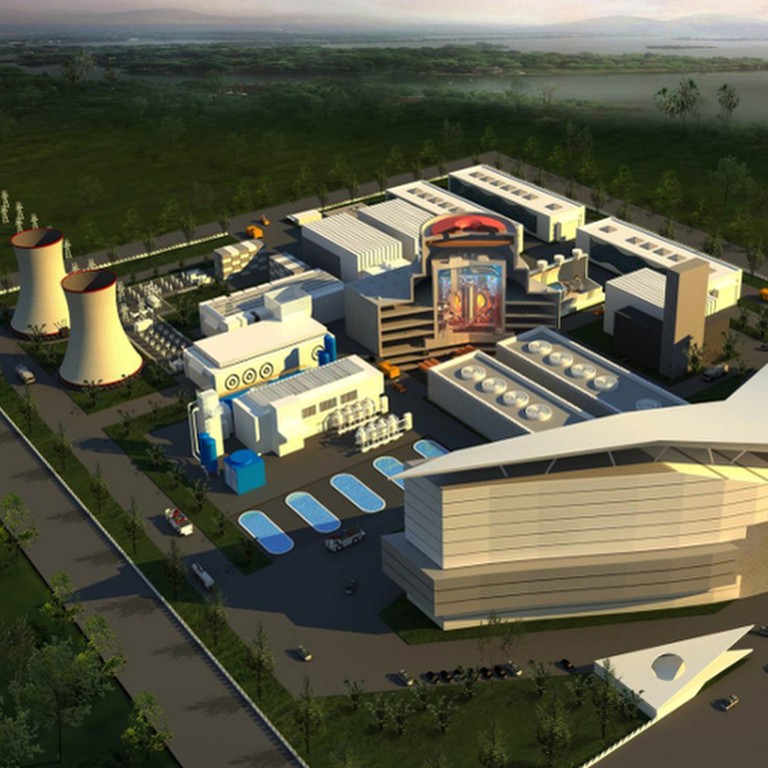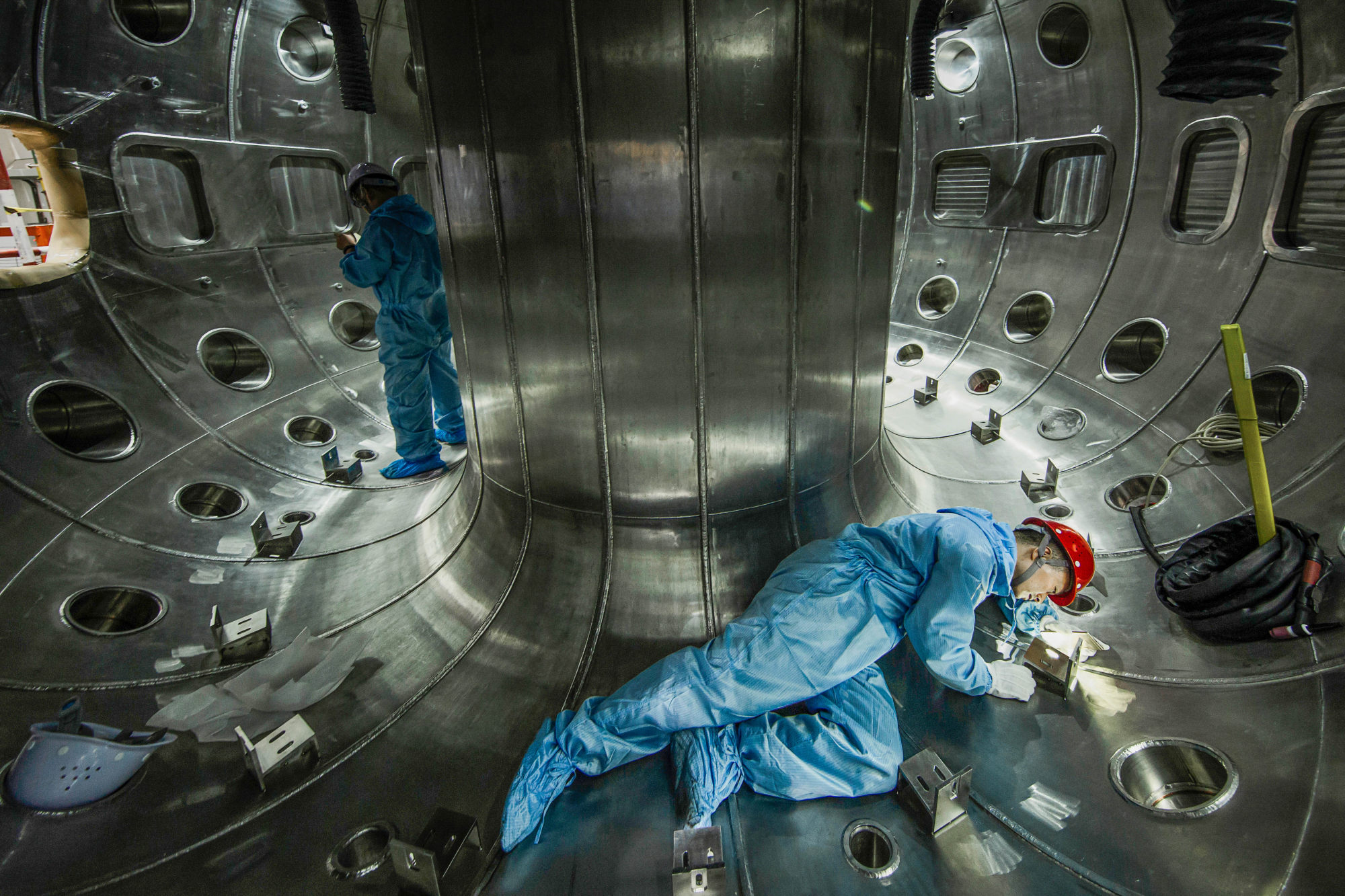
China’s fusion nuclear reactor will not crash power grid in world first: scientists
- ‘Heat sink’ filled with molten salt proposed by researchers to turn fusion energy into electricity without bringing power grid down
- The China Fusion Engineering Test Reactor, to be completed around 2035, aims for peak power output of 2 gigawatts
A research team in China said that they have designed the world’s first power plant that can turn fusion energy into electricity without bringing the power grid down.
But converting the heat into electricity is difficult because the reactor needs to take a 20-minute break every two hours, according to Xiang Kui, chief engineer of thermal systems with the China Energy Engineering Group Guangdong Electric Power Design Institute, in Guangzhou.
This frequent interruption could create pulse energy that “will cause huge damage to the power grid”, said Xiang and his colleagues in a paper published in domestic peer-reviewed journal Southern Energy Construction on Wednesday.
China plans to start generating commercial fusion power by around 2050, but the fusion power plant will need a unique design with a strong buffering zone to protect existing energy infrastructure from these deadly shocks, according to the researchers.

The CFETR is a tokamak device – built to harness the energy of fusion – that can produce an extremely powerful magnetic field to contain and control hydrogen gas 10 times hotter than the core of the sun.
When the fusion starts, two hydrogen atoms will merge into one and release a huge amount of energy.
The hot plasma is difficult to control, however. The longest run so far lasts no more than two minutes.
Based on the rapid pace of fusion technology development in recent years, Chinese scientists estimated that in about a decade, they could increase the lifespan of stable plasma to several hours.
But when the plasma becomes unstable, the reactor will need to be shut off and cooled down before another cycle restarts.
An ideal fusion reactor should operate continuously for months or even years. But by connecting the CFETR to the power grid, China will become the first country to tap into an “artificial sun” for useful energy, opening a new chapter in human history.
China’s ‘artificial sun’ hits new high in clean energy boost
The solution proposed by Xiang’s team is a heat sink.
According to a conceptual design in their paper, helium gas will transport heat from the fusion reactor to a sink filled with molten salt.
As the total energy in the sink builds up, the temperature of the salt will reach 600 degrees Celsius (1,112 Fahrenheit).
The hot molten salt will then be pumped to a heat exchanger to bring water to the boil and power up a conventional steam turbine for electric power generation.
This process is more sophisticated than those in most existing power plants, and some energy will be lost in the heat exchange facilitated by the salt.
But the heat sink can effectively eliminate the pulse energy shocks and connect the fusion reactor seamlessly to existing electricity infrastructures, according to Xiang.
“It can also help store and dissipate excessive heat when there is an emergency,” he added.
Fusion reactors are believed to be safer than nuclear reactors at present because they will shut down automatically in an accident and halt the thermonuclear reaction.
And they do not produce long-lasting radioactive waste.
Fusion is the future for nuclear energy
China launched the CFETR in 2017 as a follow-up project to the International Thermonuclear Experimental Reactor (ITER), the world’s first fusion reactor under construction in southern France.
Starting operation in 2025, ITER will fire up for up to 10 minutes to prove that the fusion process can generate more energy than it consumes.
The CFETR will take a step further by bridging the gap between scientific experiment and commercial use, according to Chinese authorities.

